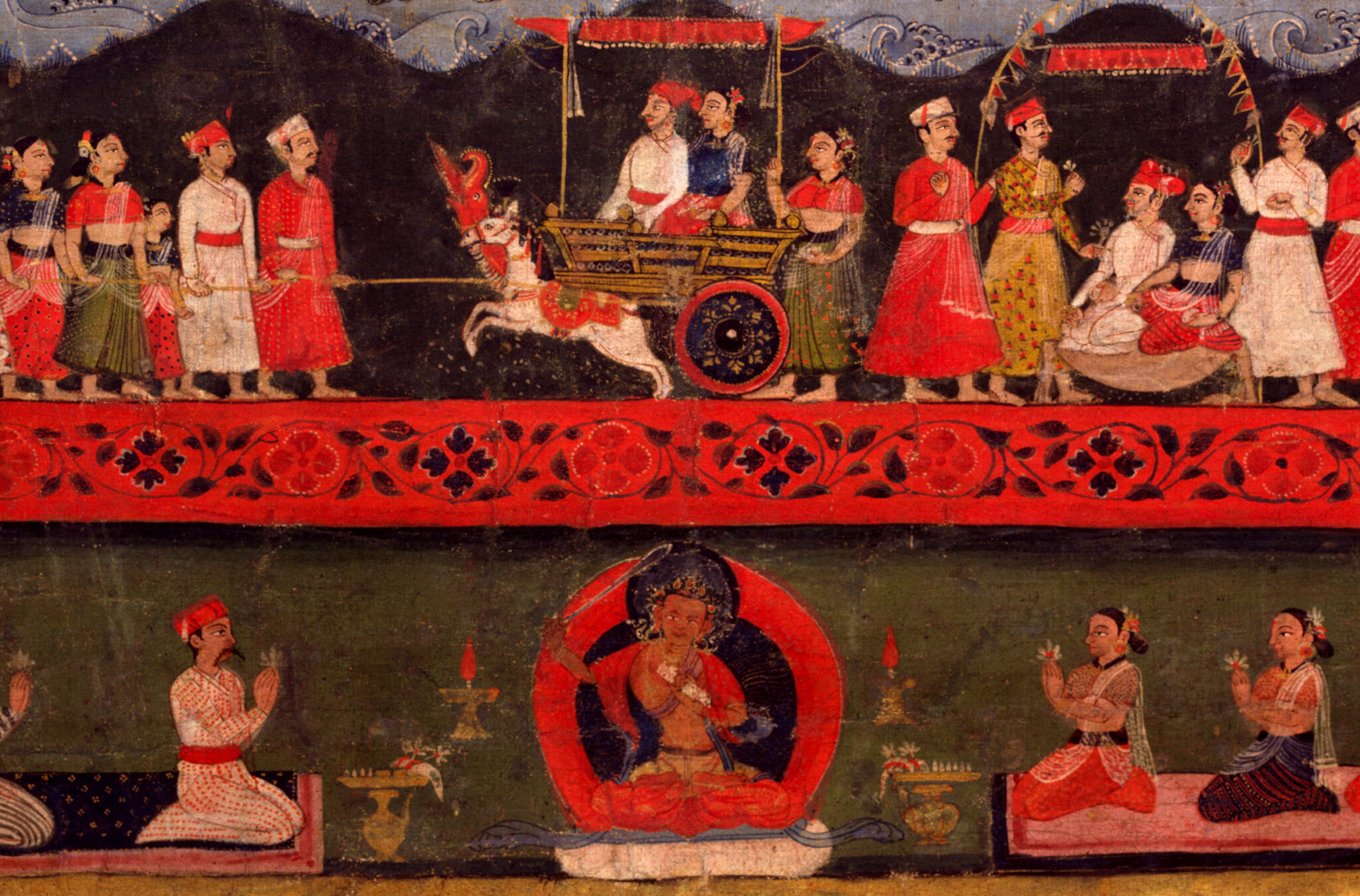In Himalayan cultures most objects are created with a specific purpose, often in the context of religious practices or special occasions marking life events, but also as part of everyday secular activities. These images and objects function as part of living practices, whether individual, familial, professional, or communal.
-
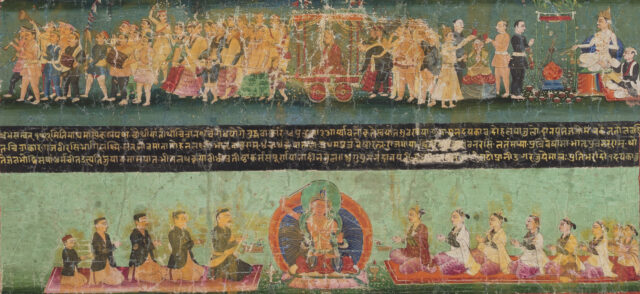 RitualRead more
RitualRead moreRitual informs the structure of religious life in the Himalayas, defining the daily routine of practitioners and shaping a range of community-based activities.
-
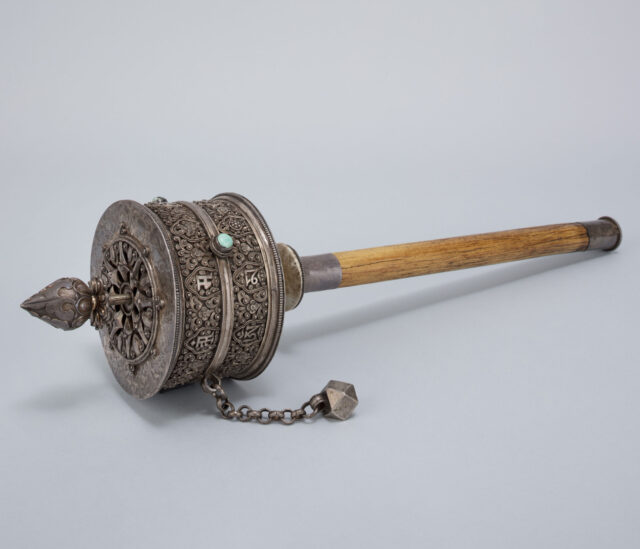 MeritRead more
MeritRead moreIn Himalayan cultures religious merit is the overarching reason for creating, commissioning, dedicating, and using religious works of art.
-
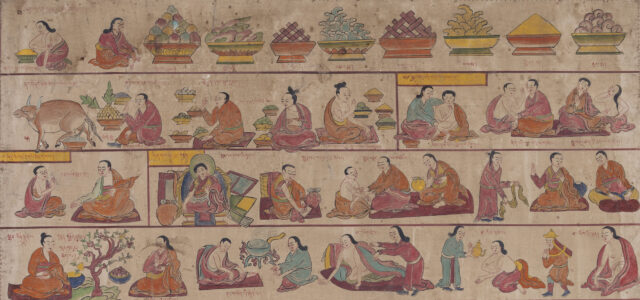 Secular AimsRead more
Secular AimsRead moreReligious rituals and the commissioning of art can serve everyday secular needs, the most common being wealth, health, and long life.
-
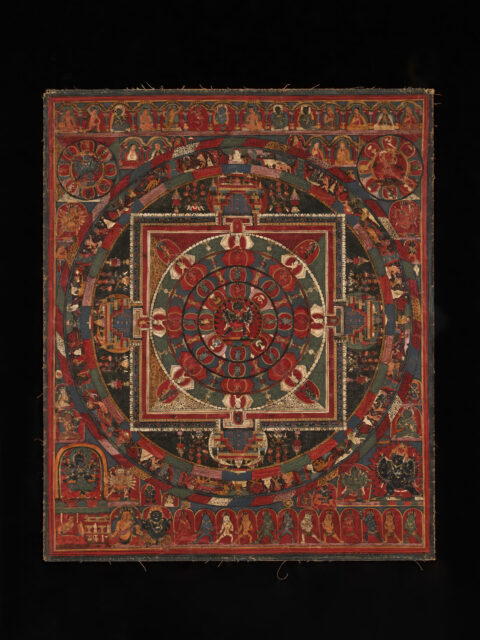 Religious GoalsRead more
Religious GoalsRead moreTantric practitioners strive to transform themselves by using meditative and ritual tools with the ultimate goal of enlightenment or awakening.
-
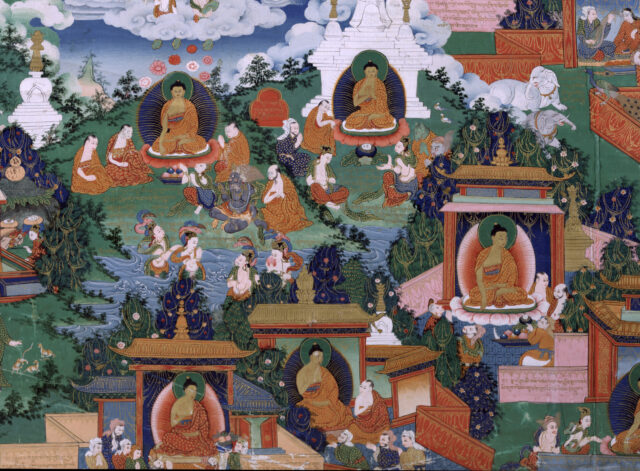 StorytellingRead more
StorytellingRead moreMany Himalayan paintings serve as illustrations and instructional tools that bring forth stories about the Buddha, Tibetan masters, and more.
-
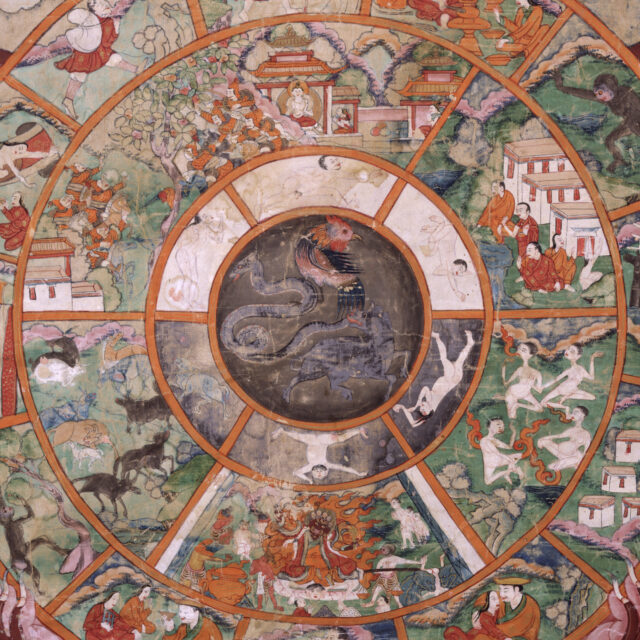 InstructionRead more
InstructionRead moreInstructive paintings can illustrate religious doctrines, medical and astrological charts, or images of ritual implements and meditative postures.
-
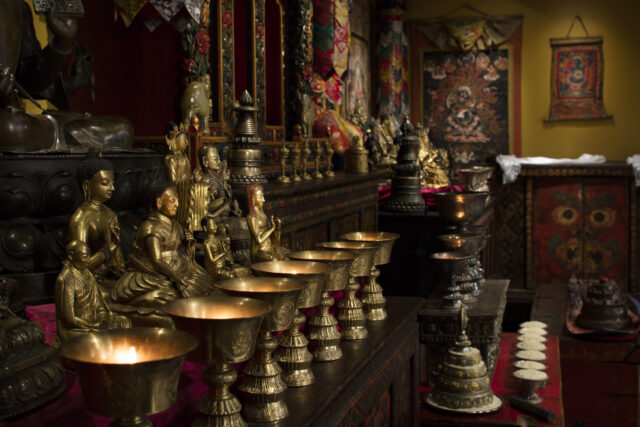 Art in ContextRead more
Art in ContextRead moreExperience a sacred space similar to what could be found in a Tibetan household where religious objects are displayed and used in ritual and devotional practices.
